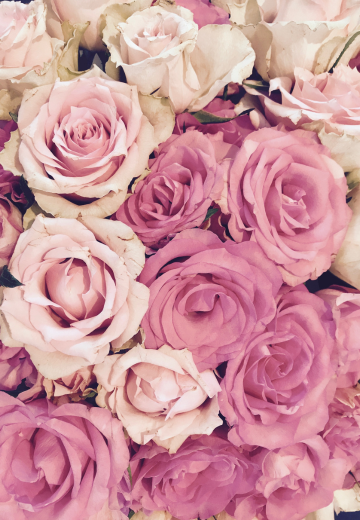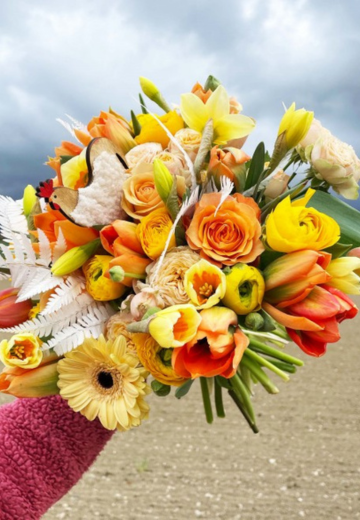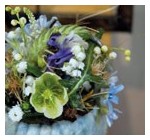Catégories
Search in blog
Why offer flowers for International Women's Day? Symbols and traditions to be aware of
Women play an essential role in our lives and in society. To celebrate their significance and contributions, International Women's Day is celebrated every year. A popular and meaningful way to mark this occasion is by offering flowers. But why offer flowers for International Women's Day? What are the symbols and traditions associated with this practice? In this article, we will explore these questions in depth.
The History of International Women's Day
International Women's Day, celebrated on March 8, is a global event that highlights the struggle for women's rights and the elimination of gender inequalities. Originating from feminist movements in Europe and America, this day was officially recognized by the United Nations in 1977. In the United States, the first "National Women's Day" was organized on February 28, 1909, while Soviet Russia recognized it as a holiday in 1921. Traditionally, demonstrations take place every year, emphasizing demands for the right to vote, workplace equality, and an end to discrimination. Unfortunately, the significance of this day is sometimes distorted in popular language and media, which sometimes portray it as a simple "Women's Day." Despite this, the idea of offering flowers to women is not based on a mere celebration but rather on the recognition of their essential role in a centuries-old struggle. Through the language of flowers, this gesture aims to encourage women to persevere in this gender war and never give up on their aspirations for equality.
Why Offer Flowers for International Women's Day ?
Offering flowers to women on International Women's Day is a tradition imbued with symbolism. Flowers are often considered delicate and beautiful expressions of appreciation and respect. By choosing to give flowers, one wishes to recognize and celebrate women's contributions in all areas of life, highlighting their strength, resilience, and achievements. These gestures also reflect the idea of support and encouragement for women, while reminding of the ongoing importance of fighting for gender equality and respecting women's fundamental rights worldwide. Thus, offering flowers becomes a symbolic and thoughtful way to celebrate women and emphasize the commitment to the cause of equality.
Choosing the Right Flowers
Mimosa
When it comes to choosing flowers, a wide range of possibilities awaits you based on your preferences. In Italy, mimosa tops the list as the iconic flower of International Women's Day, celebrated on March 8. This tradition dates back to 1946 when the Union of Italian Women decided to select a symbolic flower for this day dedicated to women. Mimosa, with its beautiful yellow flowers that bloom during this period, was chosen for its vitality, joy, and symbolism of the transition from death to life. Since then, mimosa has become the undisputed symbol of Italian women, offered to daughters, wives, employees, and mothers, creating a deeply rooted tradition celebrated throughout the country.


Roses
The rose, a universal symbol of delicacy and perfection, also blends wonderfully with International Women's Day. Available in a variety of colors, the rose is often considered the queen of flowers and embodies various meanings depending on its shade. Whether you choose passionate red, soft pink, vibrant orange, or bright yellow, the love you express to women through a bouquet of roses remains the essential message. Red roses, in particular, remain popular due to their symbolism of love, and their charm is magnified when presented in an elegant box, reminiscent of a jewelry box, adding to their beauty and ease of care.
Spring Flowers
While rose bouquets remain timeless, International Women's Day also provides an opportunity to create diverse floral arrangements, exploring the splendor of spring flowers. Anemones, ranunculus, daffodils, tulips—the list is long, and the florist's imagination knows no bounds. Spring awakens the desire for vibrant colors, and the abundant choice of fresh flowers offers an infinite palette to satisfy every preference. Opting for locally grown flowers in Switzerland can even add an ecological dimension to your gesture, making your bouquet an eco-friendly gift. In short, the possibilities are endless, giving free rein to your creativity to mark this international day dedicated to women's rights worldwide.

Colors of Women's History Month: A Symbolic Heritage
Women's History Month, a celebration dedicated to women's achievements and the fight for equality, proudly showcases the colors purple, green, and white—a powerful symbol of a rich historical legacy. First adopted by the British Women's Social and Political Union (WSPU) in 1903, these colors—purple for dignity, green for hope, and white for purity—have been striking visual emblems used by suffragettes to identify and unite their movement.
Psychological Symbolism of Colors: Dignity, Hope, and Purity
Beyond their historical significance, purple, green, and white carry powerful psychological meanings. Purple, associated with royalty and determination, embodies the dignity of women who fought for their rights. As a calming color, it reminds us of the importance of self-care and caring for others during challenging times. Green, symbolizing growth and new beginnings, represents hope and optimism, highlighting the opportunities gained by women through their perseverance. Finally, white, linked to purity and clarity, symbolizes the integrity of women's intentions and the righteousness of their cause.
A Call for the Continuation of the Struggle
The colors of Women's History Month transcend their historical origin to become universal symbols of the ongoing female struggle for equality. As we celebrate this month dedicated to women, these vibrant hues remind us of the sacrifices and successes of past generations, while encouraging us to continue our commitment to a more equitable and inclusive future.
Ce contenu pourrait aussi vous intéresser
-
 The rose: zoom on its symbolism and colors
Read morePosté dans : Cultural point18/01/2021
The rose: zoom on its symbolism and colors
Read morePosté dans : Cultural point18/01/2021 -
 Bouquet of Roses: Origins and Popular Varieties
Read morePosté dans : Cultural point02/08/2023
Bouquet of Roses: Origins and Popular Varieties
Read morePosté dans : Cultural point02/08/2023 -
 The origins of the tradition of offering lily of the valley on May 1st
Read morePosté dans : Cultural point10/07/2023
The origins of the tradition of offering lily of the valley on May 1st
Read morePosté dans : Cultural point10/07/2023


















